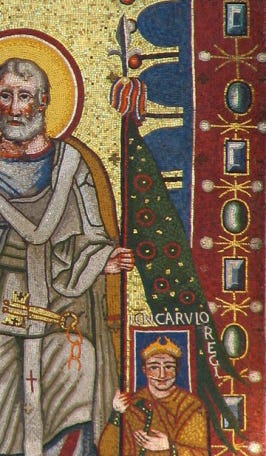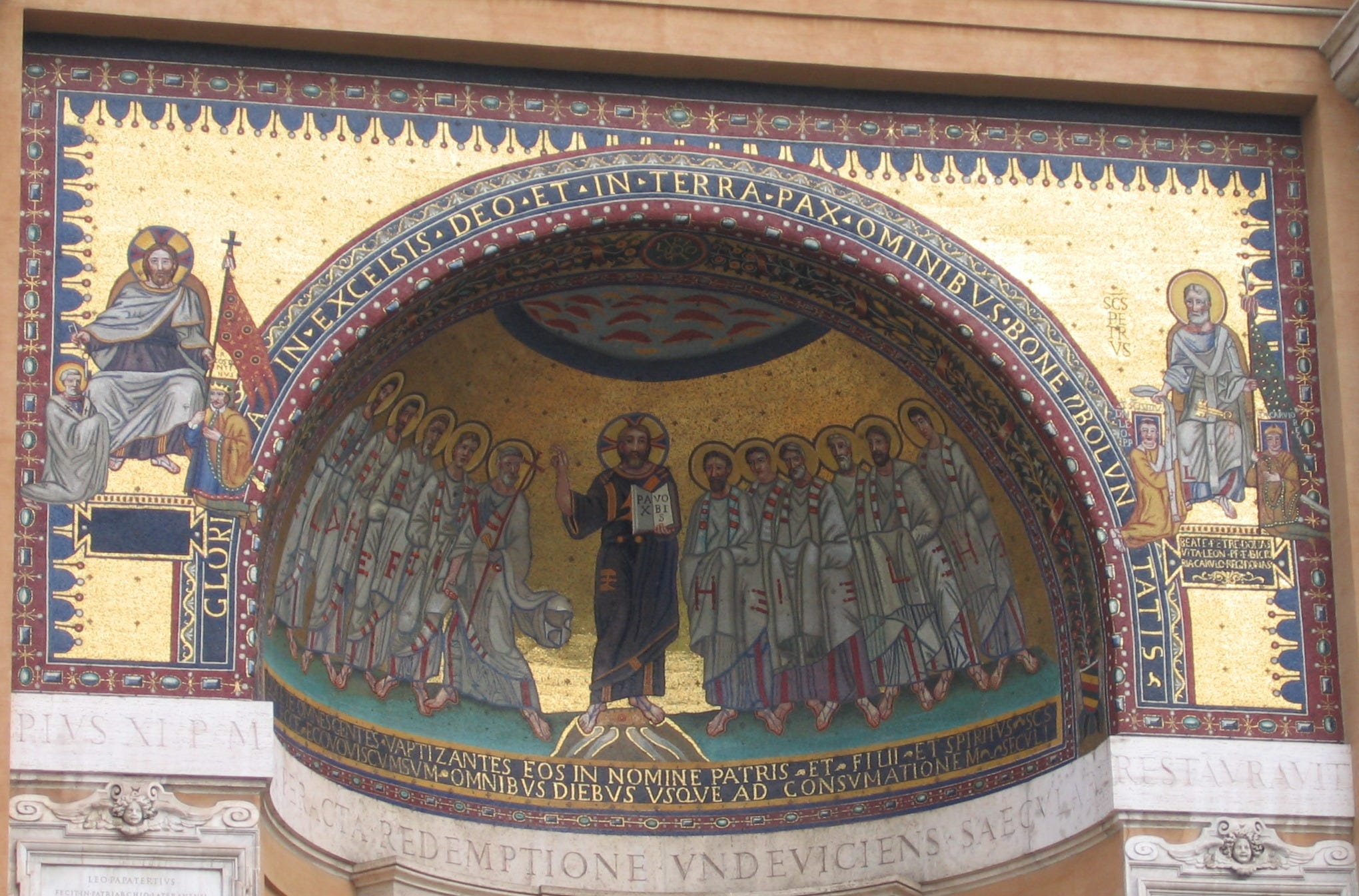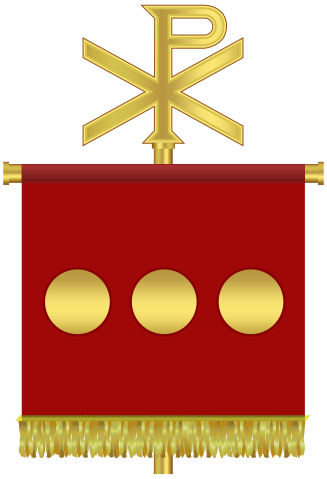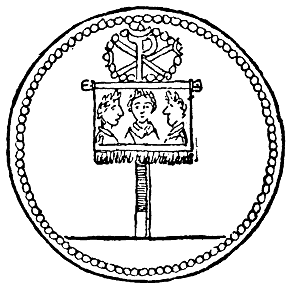Come & be a nerd with me for a minute!
's question about historical flags sent me on a deep-dive into one particular medieval standard that caught my eye years ago: the supposed "Oriflamme" of Charlemagne, but specifically this GREEN version [pic1] which is very-clearly-not the blood-red "Oriflamme" of the Capetian French Kings [pic2].
I found this green one ~10 yrs ago and simply loved the look of it, but also found it highly suspicious that…
(a) the French kings could reliably trace any of their heraldry back to Charlemagne.
(b) we knew anything about any flag of Charlemagne from 1,200+ years ago (~AD 800)
Now I’m finally looking into it.
I’m right about (A)—the design of the Oriflamme is basically unattested prior to the 1100s.
But (B) was much more interesting.
See, this design comes from a mosaic which depicts both Charlemagne and Pope Leo III to commemorate Charles’s coronation as Roman Emperor in AD 800 [pic3].
The mosaic is part of the Triclinium Leoninum (“Dining Hall of (Pope) Leo”) [pic4, with the apse]. It was originally built at Leo’s behest between 800-815, so it depicts a historical event and was designed by eyewitnesses.
Now the original mosaic degraded and was ‘restored’ during the Renaissance (ca. 1590). Much of the artistry fails to look properly medieval, but we can reasonably believe that many of the details like posture, coloration, and text were faithfully restored from the 9th-cent. original.
Which means that it is reasonable to claim that this green banner (or something very much like it) was in fact the (or at least “a”) royal standard of Charlemagne at the time of his coronation as Roman Emperor in AD 800.
By looking at the motifs and themes of the whole mosaic, it’s even possible that this banner was presented to Charlemagne at that moment. The left of the mosaic shows Christ giving the “Keys to the Kingdom of God” to the Apostle Peter and also giving a RED banner to “Rex” Constantine, the Roman Emperor who legalized Christianity. Combined with the right-hand scene of Saint Peter (keys on his lap) giving a bishop’s palladium to Leo III and the green banner to Charlemagne. This is clearly meant to show that both powers—Pope and Emperor—derive their authority from God (ie Jesus Christ).
It all says: “Leo is the successor of Peter, Charles is the successor of Constantine, and isn’t it all just good and right and holy that we’re in charge.”
But back to flags: notice how Constantine’s flag is red with bits of gold? This might be a bastardized version—handed down from textual descriptions rather than images—of Emperor Constantine’s actual banner: the “Labarum” [pic5], which was red-and-gold and had three discs which depicted Constantine and his sons [another visualization is in pic6].
Later French chroniclers claimed that the Royal Oriflamme was in fact designed from or even the exact same object as Constantine’s Labarum, all as a way to hearken back to Rome’s legacy, both through Charlemagne and the pope. This 13th century story co-opts the same symbols and messaging of the 9th century one! How cool is that!
And since no one person would had all the information available to poke the holes in the story (as we do now), you can see how it wasn’t just a lie—it was reasonable for them to believe that the gold-and-red banner of the Oriflamme could be the same as the gold-and-red banner that Constantine carried. “I hear there’s even a big mosaic in the pope’s house that shows the banner with Constantine and it matches the one that Charlemagne had!”
And that’s how a flag design survived/mutated/was-bastardized over more than 1,000 years in a purely analog society, despite massive cultural and political upheaval in that period.
But in all, I’ll still take the green one, thanks.
( Tagging a few friends who might like this )






